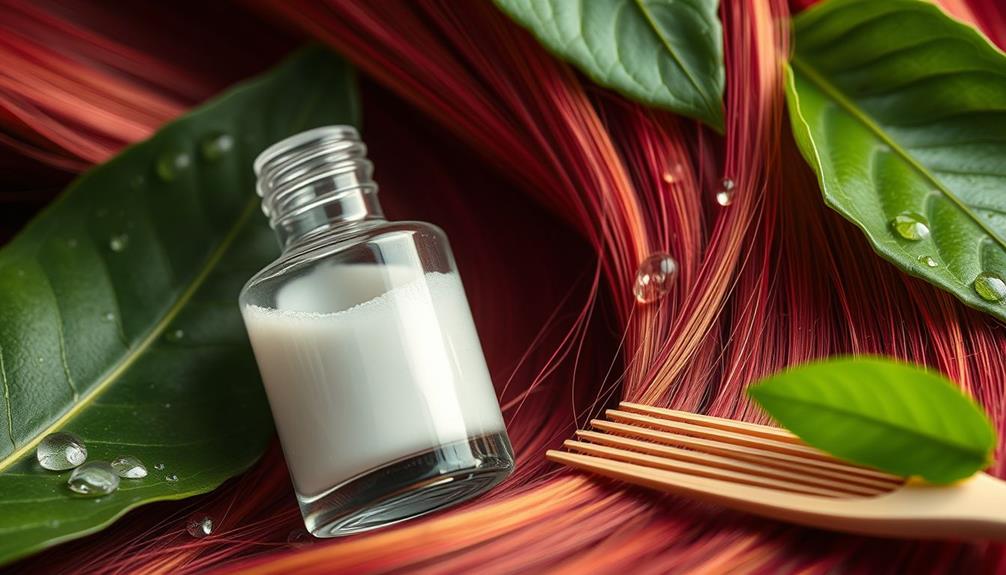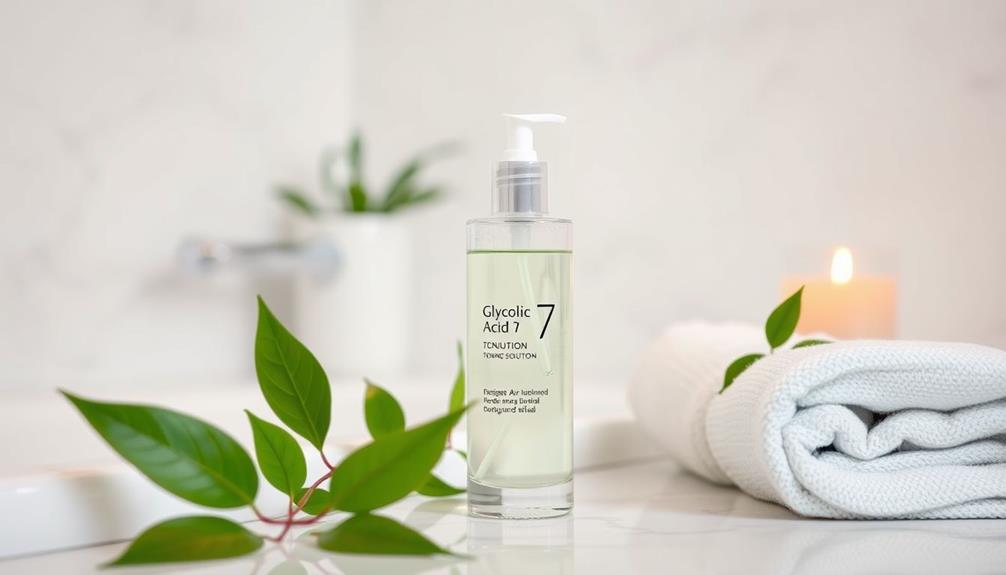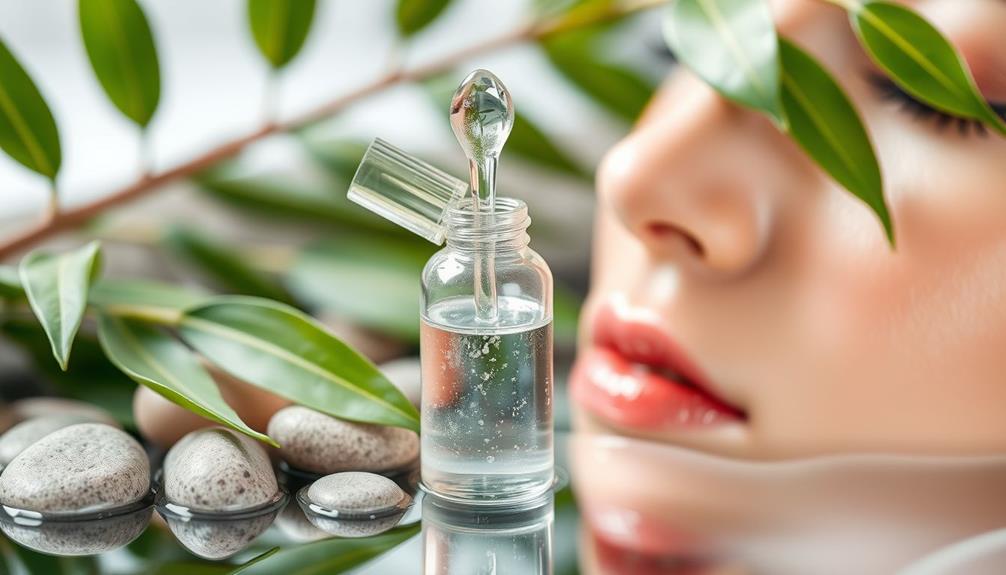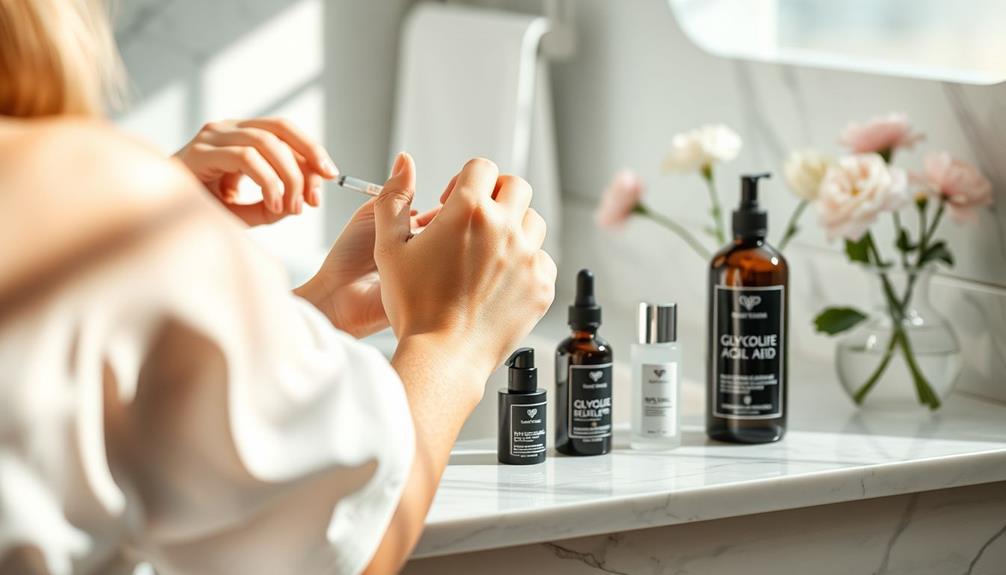Yes, glycolic acid can improve your hair health. This exfoliating alpha-hydroxy acid helps remove dead skin cells from your scalp, promoting a healthier environment for hair growth. It also enhances moisture retention, addressing dryness and frizz, and can increase hair elasticity, which may reduce breakage. However, be cautious with concentrations above 10%, as they can cause irritation. Start with a lower concentration and patch test before full use. Incorporating glycolic acid into your routine may offer great benefits for your hair, but there's more to explore about its effects and proper usage.
Key Takeaways
- Glycolic acid exfoliates the scalp, removing dead skin cells and promoting healthier hair growth conditions.
- It enhances moisture retention, reducing dryness and frizz for improved hair texture.
- By balancing scalp pH, glycolic acid can prevent dandruff and improve ingredient absorption.
- Clinical studies indicate that it increases hair elasticity, which reduces breakage and promotes overall hair strength.
What Is Glycolic Acid?
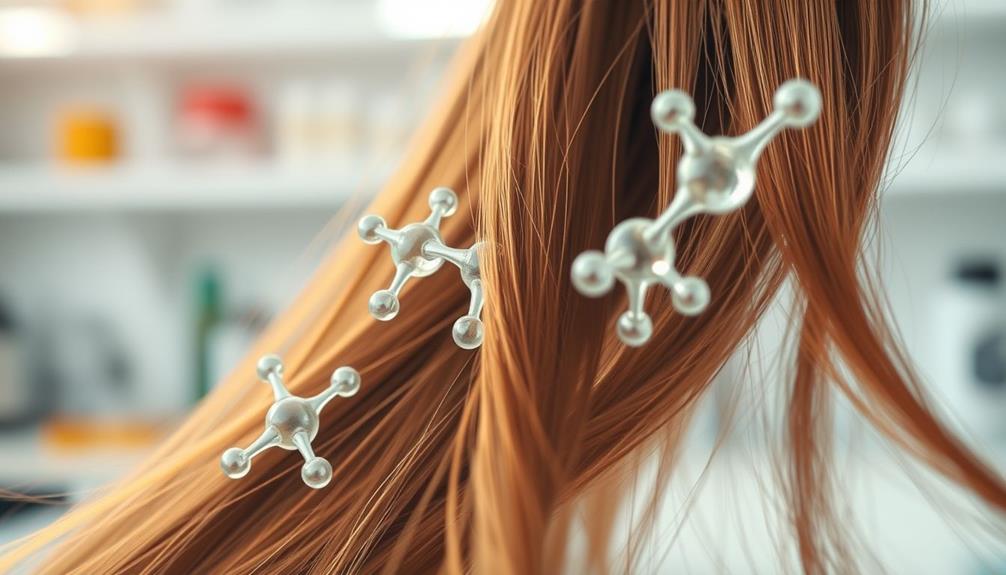
Glycolic acid, an alpha-hydroxy acid derived from sugar cane, is the smallest AHA, making it effective for deeper penetration into your skin and scalp. This unique property means it can directly address various scalp concerns. Its exfoliating properties help remove dead skin cells, which is important for maintaining scalp health. By promoting cell turnover, glycolic acid effectively sheds old cells and reduces the chances of product buildup that can lead to issues like dandruff.
Additionally, incorporating essential oils for hair growth can further enhance scalp health and stimulate hair follicles.
Furthermore, glycolic acid plays a significant role in enhancing moisture retention. A well-hydrated scalp is essential for overall hair health, and by balancing the pH levels, glycolic acid creates a favorable environment for hair follicles to thrive. This pH-balancing effect is particularly beneficial if you're struggling with dandruff, as it can help regulate the scalp's natural balance, reducing irritation and flakiness.
While glycolic acid is generally safe for topical use, remember that individual tolerance may vary. If you're new to using it, starting with lower concentrations is recommended to gauge your skin and scalp's response.
Benefits for Hair Health
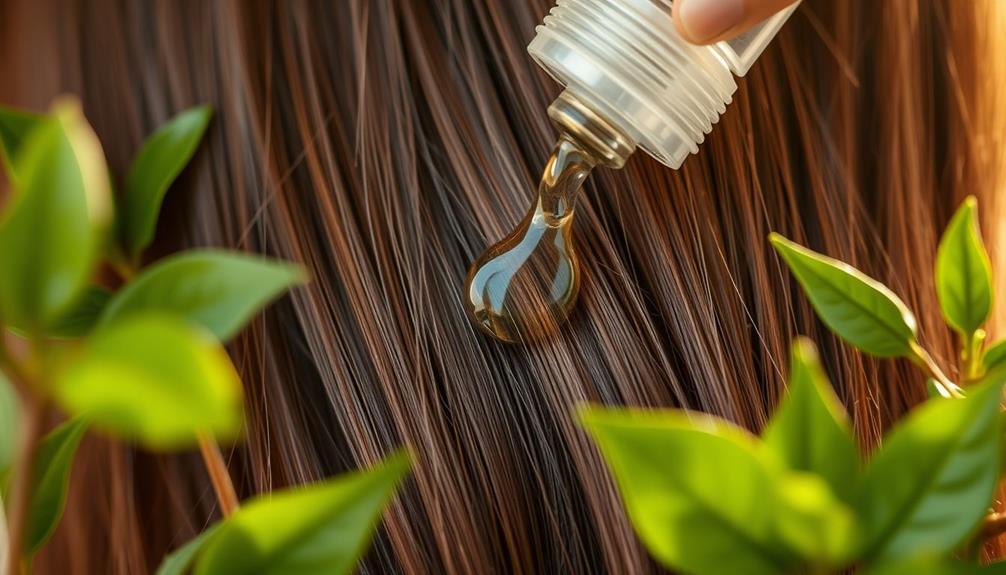
The benefits of glycolic acid for hair health are numerous, making it an important ingredient in your hair care routine. As a powerful exfoliant, glycolic acid effectively removes dead skin cells from your scalp, creating a healthier environment for hair growth and reducing the risk of clogged follicles. This cleansing action allows your hair to thrive, free from buildup that can hinder its progress. Additionally, glycolic acid can help to improve the overall texture and appearance of your hair by promoting a smoother, shinier surface. It also has the ability to strengthen the hair shaft, leading to less breakage and split ends. Overall, the glycolic acid benefits for hair make it an essential ingredient in maintaining healthy, vibrant locks.
Regular trims, such as those recommended every 6-8 weeks, can complement the effects of glycolic acid by keeping hair healthy and preventing split ends, thereby enhancing overall appearance and vitality regular trims.
Glycolic acid also enhances moisture retention in your hair, improving softness, strength, and manageability while addressing common issues like dryness and frizz. Additionally, clinical studies suggest that it may increase hair elasticity, which can help reduce breakage and support overall hair growth.
Balancing scalp pH levels is essential for maintaining a healthy scalp, and glycolic acid excels in this area, preventing conditions such as dandruff. Its penetrating properties further enhance the absorption of other beneficial hair care ingredients, maximizing their effectiveness in improving hair health.
Risks and Precautions
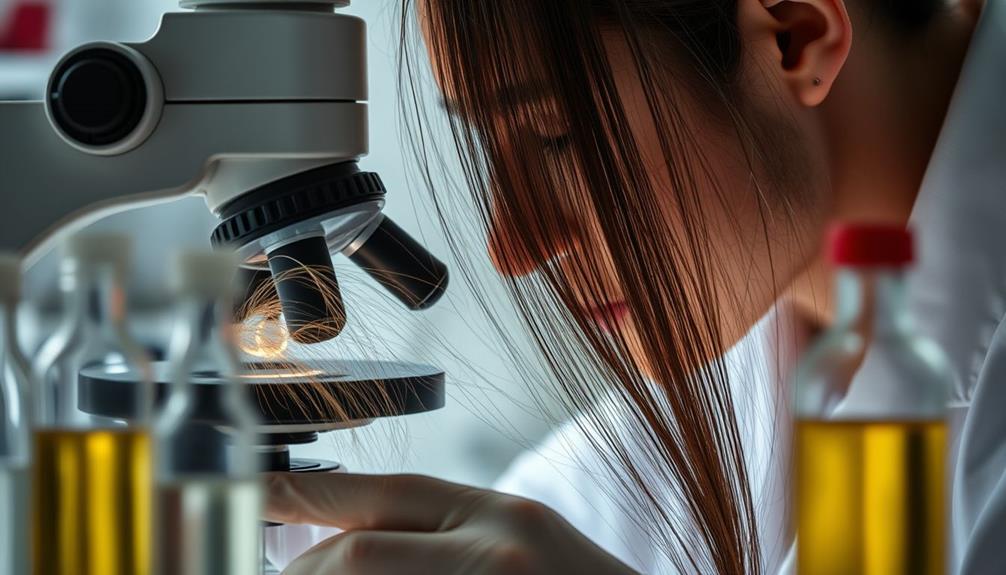
Using glycolic acid can come with some risks and precautions that you should be aware of to guarantee a safe and effective hair care experience.
One major concern is scalp irritation, which can lead to redness and itchiness, particularly with higher concentrations above 10%. If you have a sensitive scalp, it's crucial to start with lower concentrations to minimize potential side effects.
Additionally, understanding how certain scents can affect sensitivities is important; for example, certain smells cats hate could be a consideration if you're using hair products with strong fragrances around your pets.
Individuals with very dry scalps, open wounds, or dermatitis should avoid using glycolic acid altogether, as it may worsen these conditions.
Additionally, glycolic acid increases sun sensitivity, so applying it in the evening and using sunscreen during the day is advisable.
Overuse can also result in a dry scalp and hair, highlighting the importance of moderation. Pay close attention to how your scalp reacts and adjust your usage accordingly.
If you're uncertain, it's always best to consult a dermatologist before starting glycolic acid treatment. They can provide personalized advice tailored to your hair health needs while mitigating risks associated with its use.
Prioritizing these precautions will help you achieve the best results without compromising your scalp's well-being.
How to Use Glycolic Acid
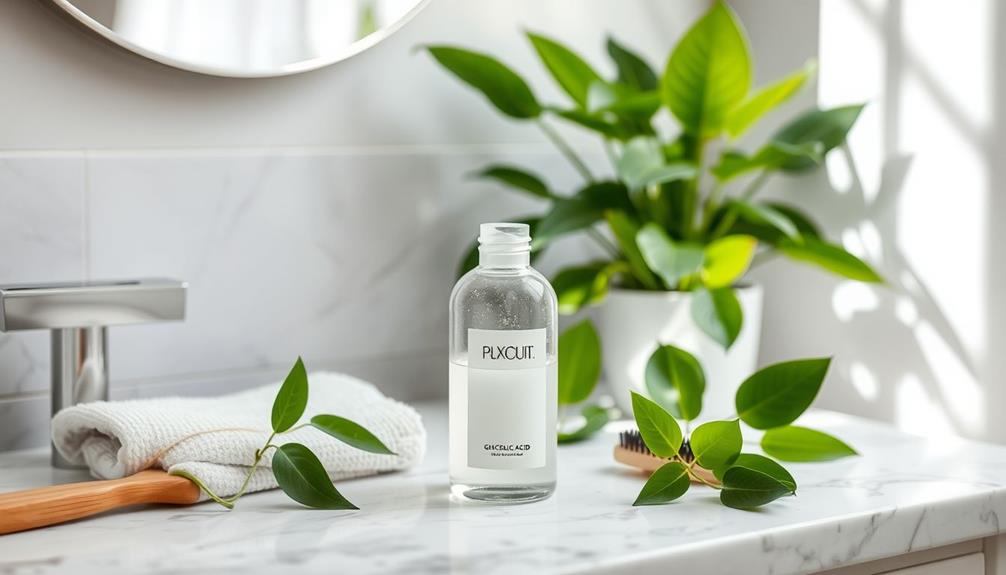
To effectively incorporate glycolic acid into your hair care routine, start with a concentration of 5-10% and limit use to once or twice a week. This approach promotes hair health while preventing irritation.
You can apply glycolic acid as a pre-shampoo treatment by massaging it into your scalp, leaving it on for about 30 minutes, and then rinsing it out. Alternatively, consider using products that include glycolic acid in shampoos or scalp toners.
For best results, apply glycolic acid products in the evening to minimize sun sensitivity. If you're using leave-on products, let them sit for 5-10 minutes before rinsing.
It's crucial to conduct patch testing before full application, especially if you have sensitive skin or existing scalp conditions. This simple step helps you check for any sensitivities or adverse reactions.
Always pay attention to individual scalp responses and adjust your usage accordingly to avoid over-exfoliation and dryness.
Alternatives for Hair Loss

Exploring alternatives for hair loss can lead you to effective treatments that suit your needs and preferences. Various options exist, each targeting different underlying issues that contribute to hair thinning, such as clogged hair follicles and scalp conditions.
| Treatment | Description |
|---|---|
| Minoxidil | FDA-approved topical treatment promoting hair regrowth. |
| Finasteride | Oral medication that prevents hair loss in men. |
| Steroid Creams | Reduces inflammation for certain types of hair loss. |
| Anti-Fungal Shampoos | Targets scalp issues like dandruff and fungal infections. |
In addition to these conventional treatments, natural remedies like essential oils may also promote hair health. Glycolic acid, known for its exfoliant properties, can help clear product buildup and address scalp acne, providing a healthier environment for supporting hair growth. By incorporating these alternatives into your routine, you can tackle the root causes of hair loss while considering your personal preferences. Whether you choose medical treatments or natural remedies, the key is finding what works best for you in your journey to improve hair health.
Frequently Asked Questions
Can Glycolic Acid Help With Hair?
Yes, glycolic acid can help with hair. It exfoliates your scalp, enhances moisture retention, and boosts circulation to hair follicles, promoting healthier growth while reducing breakage and frizz. Just monitor your scalp's sensitivity during use.
How Long Does It Take for Glycolic Acid to Work on Hair?
It typically takes 2 to 4 weeks for glycolic acid to show benefits for your hair. You might notice improved texture and moisture retention after consistent weekly use, with long-term effects appearing around 6 to 8 weeks.
What Are the Cons of Glycolic Acid on Scalp?
You might think glycolic acid is a miracle treatment, but it can irritate your scalp, cause dryness, and even lead to hair breakage. Keep in mind its potential risks before applying it to your routine.
What Is the Effect of Using Glycolic Acid in Hair Care Products?
Using glycolic acid in hair care products exfoliates your scalp, enhances hydration, and improves hair texture. It helps reduce breakage and dandruff while promoting a healthier environment for hair growth. Just use it once or twice weekly!
Conclusion
Incorporating glycolic acid into your hair care routine could be a game-changer for your locks.
With its ability to exfoliate the scalp and promote healthier hair growth, it's like giving your hair a revitalizing reboot, much like a smartphone update.
Just remember to use it wisely and stay aware of any potential risks.
If you're looking for alternatives, don't hesitate to explore other options.
Your hair deserves the best care, so why not give it a try?
